Every February, Punxsutawney Phil the Groundhog gets woken up and pulled from his den to help us predict when spring will come. This Groundhog Day ritual is repeated at local zoos and celebrations around the US. Grabbing a sleeping big-toothed rodent from its den does not seem like a smart idea, so has anyone been bitten by a groundhog? Do groundhogs attack people in the wild? Do groundhogs carry diseases? Are groundhogs dangerous? Let’s find out!
What are groundhogs?
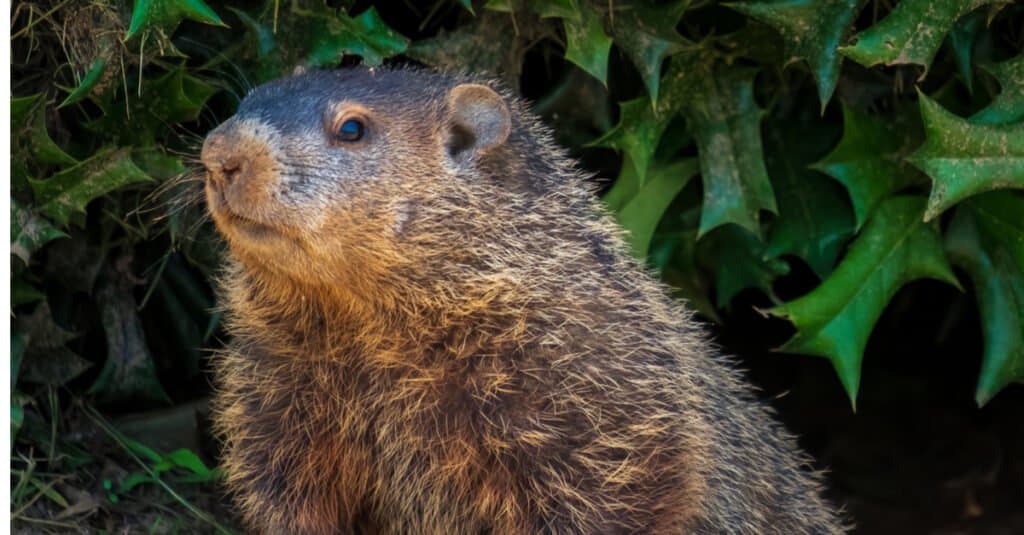
Groundhogs (also called woodchucks) are stocky rodents that are 18-20 inches long.
©samray/Shutterstock.com
Groundhogs are also called woodchucks. They are a medium-sized stocky rodent, a little smaller than a raccoon. Adult males can grow to be 13 lbs and are around 18-20 inches long. Groundhogs have thick brownish fur and claws that help the burrow underground. They build extensive burrows similar to prairie dogs. It may be surprising that these chubby rodents can also climb trees and are good swimmers. They spend most of their time burrowing, looking for food. In the fall they have to put on enough weight to get through the winter where they climb into their burrows and hibernate until spring.
Where do groundhogs live?
Groundhogs live in the eastern half of the United States and much of Canada. The southern edge of their range is the northern parts of South Carolina, Georgia and Alabama, they do not live in Florida at all. They live throughout Missouri, Iowa and into Minnesota and crossover a bit into Nebraska, Kansas and Oklahoma. You can even find groundhogs in parts of Alaska!
Are groundhogs dangerous?
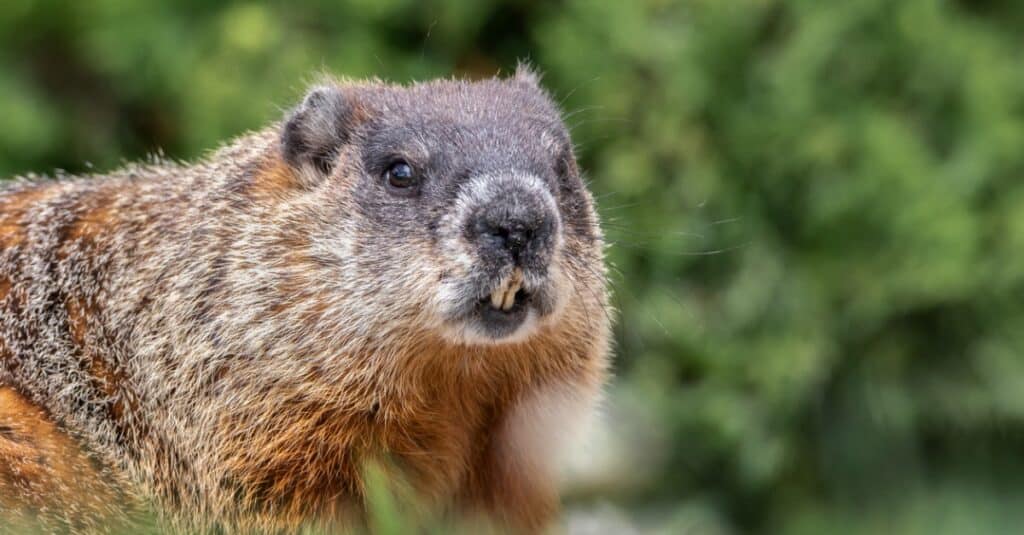
Are groundhogs dangerous? Not usually, they typically avoid people and will run away if a person approaches.
©iStock.com/Jean Landry
Groundhogs are not dangerous; they rarely interact with humans so there are few reported conflicts. If you came across a groundhog they would most likely run away. There have been a few cases where people have been bitten by groundhogs, but these instances are rare.
Has anyone been bitten by a groundhog?
Yes. “Groundhog bites Wisconsin Mayor in the Ear” That was the headline in 2015 after a Groundhogs day celebration. Mayor Jonathan Freund held the groundhog a little too close to his head and Jimmy the Groundhog nipped at his ear. The mayor was fine and although it probably hurt, he continued on with the ceremony. In 2009 Mayor Michael Bloomberg was also bitten by a Groundhog on Groundhogs Day. Staten Island Chuck wasn’t much interested in being woken up to predict the weather and wouldn’t budge so Mayor Bloomberg tried to pick him up. Chuck was startled and bit the mayor in the hand. Now it is best practice for handlers to wear gloves.
Has anyone been attacked by a groundhog?
Yes. Groundhogs have tried to attack people, but it is very rare. The cases usually involve groundhogs that have rabies. There was a case of a woman in Eldersburg, Maryland that was chased by groundhog in a parking lot. Can you imagine coming out of a store with your bags, maybe searching for your keys when a wild groundhog charges at you? She was able to get into her car before the groundhog got her. Typically if a groundhog was approached by a person in a parking lot they would run the other way as fast as possible.
Another story involves a New Hampshire man that was in his yard when a groundhog approached him. At first the man, Gary McGrath, watched the groundhog from a distance, but the groundhog charged at him and tried to bite his leg. The man nudge him back with his foot and realizing there was something wrong with the groundhog the man darted inside the house. The crazed groundhog attacked the front door and Gary took photos of the groundhog with teeth showing trying to chew through the glass storm door. After calling Animal Control a worker showed up to help assist and to remove the groundhog, but when the Animals Control worker got out of his truck, the groundhog charged at him, forcing him back into the safety of his truck. Clearly, there was something wrong with this poor groundhog. No one was injured in this incident.
Do groundhogs have rabies?
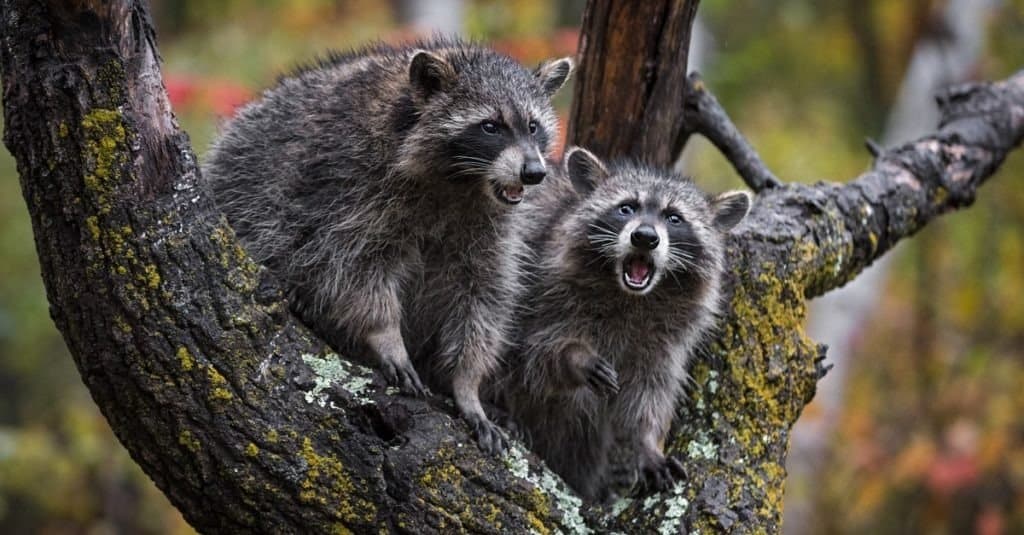
If groundhogs live near raccoons they can be exposed to rabies.
©Geoffrey Kuchera/Shutterstock.com
Groundhogs can carry rabies. The CDC keeps statistics on rabies infections and advises people that have been bitten by an animal to seek immediate medical attention. By receiving a series of shots called a PEP series, rabies can be avoided. In the United States, there is an average of 1-3 fatalities per year from rabies. Dog bites are the most common kind of animal bite. Raccoons, skunks, and foxes are common carriers of rabies as are bats. Groundhogs fall into the “Other Wild Animal” category. Animals like squirrels, guinea pigs and rabbits have not been known to transmit rabies to humans, “woodchucks (groundhogs) accounted for 93% of the 371 cases of rabies among rodents reported to CDC”. So in the rodent category, groundhogs are the most likely to carry rabies.
Do groundhogs have sharp teeth?
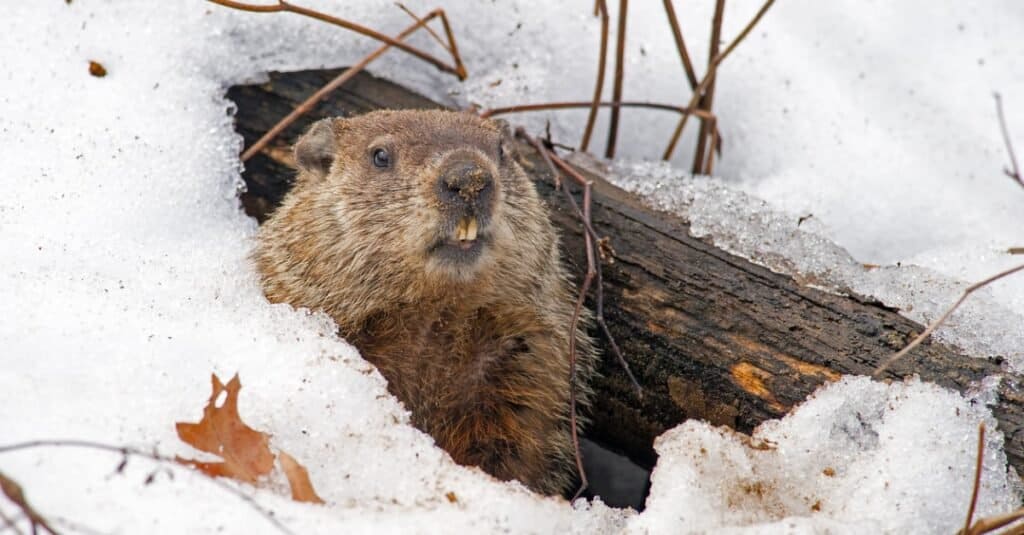
groundhog coming out of burrow in the snow
©iStock.com/BrianEKushner
Groundhog teeth are a chiseled shape, similar to beaver teeth. They have two large incisors on the top and bottom of their mouths. The teeth of groundhogs continue to grow throughout their lives and they wear them down by gnawing on wood.
Those large incisors can come in handy for defense purposes if the woodchuck feels threatened. Examples of such an instance would include the invasion of its underground haven by a predator. Under such circumstances, the stocky rodent is capable of putting up quite a fight and will even put its claws to good use along with those front teeth, too.
What should you do if you see a groundhog?
Groundhogs can show up in your yard or on a hike, but in most cases, they will run away. If one stands its ground or approaches you it is best to back away and take shelter. If you have a group of groundhogs making their home in your yard you will want to call animal control or a pest control service to have them removed. As with all wildlife you want to keep your distance and never approach a wild animal.
What are groundhogs afraid of?
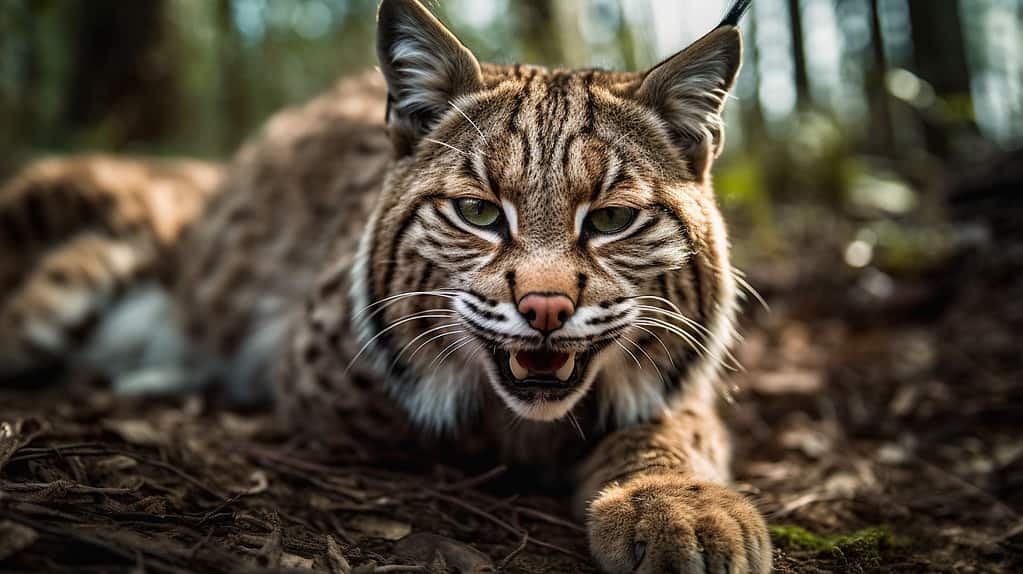
There are certain things that scare groundhogs and are even utilized as deterrents. While these animals are quite cute, you may not want them taking up residence on your property. Here is a list of things that scare groundhogs:
- Predator Urine Groundhogs recognize the scent of other wild animals that prey on them. For example, bobcat urine sprayed on the base of trees can discourage them from gnawing, while sprayed around their burrows can drive them away.
- Castor Oil Castor oil is not so much something they fear as much as a smell groundhogs hate, so putting it in or around their burrows will be an effective deterrent.
- Human Hair Ready for a haircut? If so, you should safe your hair cuttings, put them in a mesh bag, and hang them near your resident groundhog’s home, because when they smell it, they’ll think a human is nearby.
- Soiled Cat Litter Similar to the usage of predator urine, the groundhog can be scared when it smells cat litter, sensing a predator is in the area.
- Other Smells They Hate You can also try overwhelming these critters with the scent of ammonia, cayenne pepper, garlic, or lavender.
What animal might be safer than a groundhog for Groundhog Day?
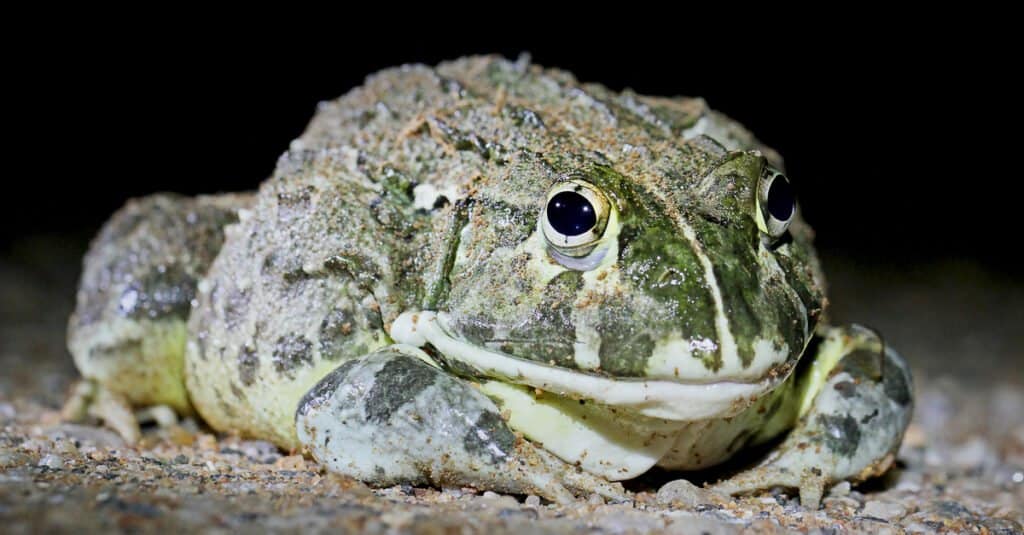
In Snohomish, Washington they celebrate GroundFrogs Day with a giant
bullfrog
!
©Eugene Troskie/Shutterstock.com
In Snohomish, Washington the town celebrates GroundFrogs Day. Instead of a groundhog, they have a bullfrog that they use to predict the onset of spring. Their special frog is named Snohomish Slew and this creative celebration is held a couple of days before Groundhog Day. Bullfrogs are big! They can be 6-8 inches long and weigh 2-3 lbs. The good news is Snohomish Slew has never bitten any mayors!
The photo featured at the top of this post is © iStock.com/mirecca
Thank you for reading! Have some feedback for us? Contact the AZ Animals editorial team.






